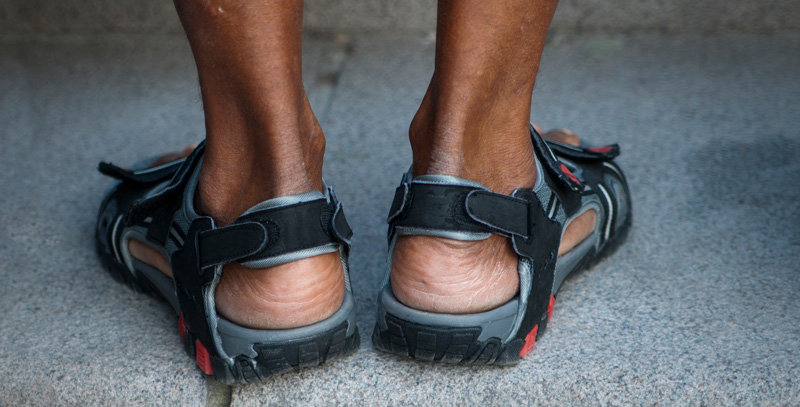Foot arthritis is a common form of arthritis. Severe foot arthritis can restrict your mobility and limit your quality of life. With proper treatment, however, you can slow the progression of arthritis and lead a more productive life.
There are three types of arthritis that may affect your foot.
Rheumatoid arthritis: An inflammatory disease affecting the lining of joints and destroys bones, joints and tissues.The condition often starts in smaller joints, like those found in the foot or ankle. The exact cause of rheumatoid arthritis is not known. Although it is not an inherited disease, researchers believe that some people have genes that make them more susceptible. When the body is exposed to a trigger, such as infection or another environmental factor, the immune system begins to attack the joint.
Osteoarthritis: A progressive condition that destroys the cartilage that covers the ends of bones. When uncovered bones rub against each other, chronic pain, stiffness and weakness results. Many factors increase your risk for developing osteoarthritis. Because the ability of cartilage to heal itself decreases as we age, older people are more likely to develop the disease. Other risk factors include obesity and family history.
Post-traumatic arthritis: A form of arthritis similar to osteoarthritis that develops after — often years after — direct trauma or injury to the foot. Fractures, especially those that damage the joint surface, and dislocations are the most common injuries that lead to this type of arthritis.
What does it feel like?
There are 26 bones and over 30 joints in a foot. Symptoms of foot arthritis vary, depending on what joint is affected. These symptoms may include:
- Pain
- Tenderness
- Swelling
- Stiffness
- Reduced motion
- Difficulty walking
How do I know if I have foot arthritis?
A physical examination of the foot, with focus on pain, will help your doctor with diagnosis. A review of your medical history will also help your doctor understand if your symptoms are a result of a past foot injury or if arthritis runs in your family. X-ray imaging can show changes in the spacing between bones or in the shape of the bones and also rule out other underlying conditions like fracture. Other imaging tools such as CT Scan may also assist in diagnosis.
How is foot arthritis treated?
Symptoms of arthritis may be relieved with improved (wider and less restrictive) footwear and orthodics, such as shoe inserts or arch supports, which may offer your feet padding and shielding. In some cases, custom-made shoes may be recommended.
Anti-inflammatory medicines — such as aspirin or ibuprofen — or cortisone injections may also be prescribed by your doctor. Physical therapy, weight control and nutritional supplements may also be recommended. When nonsurgical treatments are no longer effective, surgery may be considered.
Surgeries include:
Arthroscopy: Using tiny incisions, the surgeon can remove bone spurs, loose fragments or a portion of the diseased bone lining.
Arthrodesis (fusion): The surgeon fuses the bones of the joint completely, making one continuous bone.
Arthroplasty (joint replacement): A procedure to treat ankle arthritis. The damaged ankle joint is replaced with an artificial implant.

